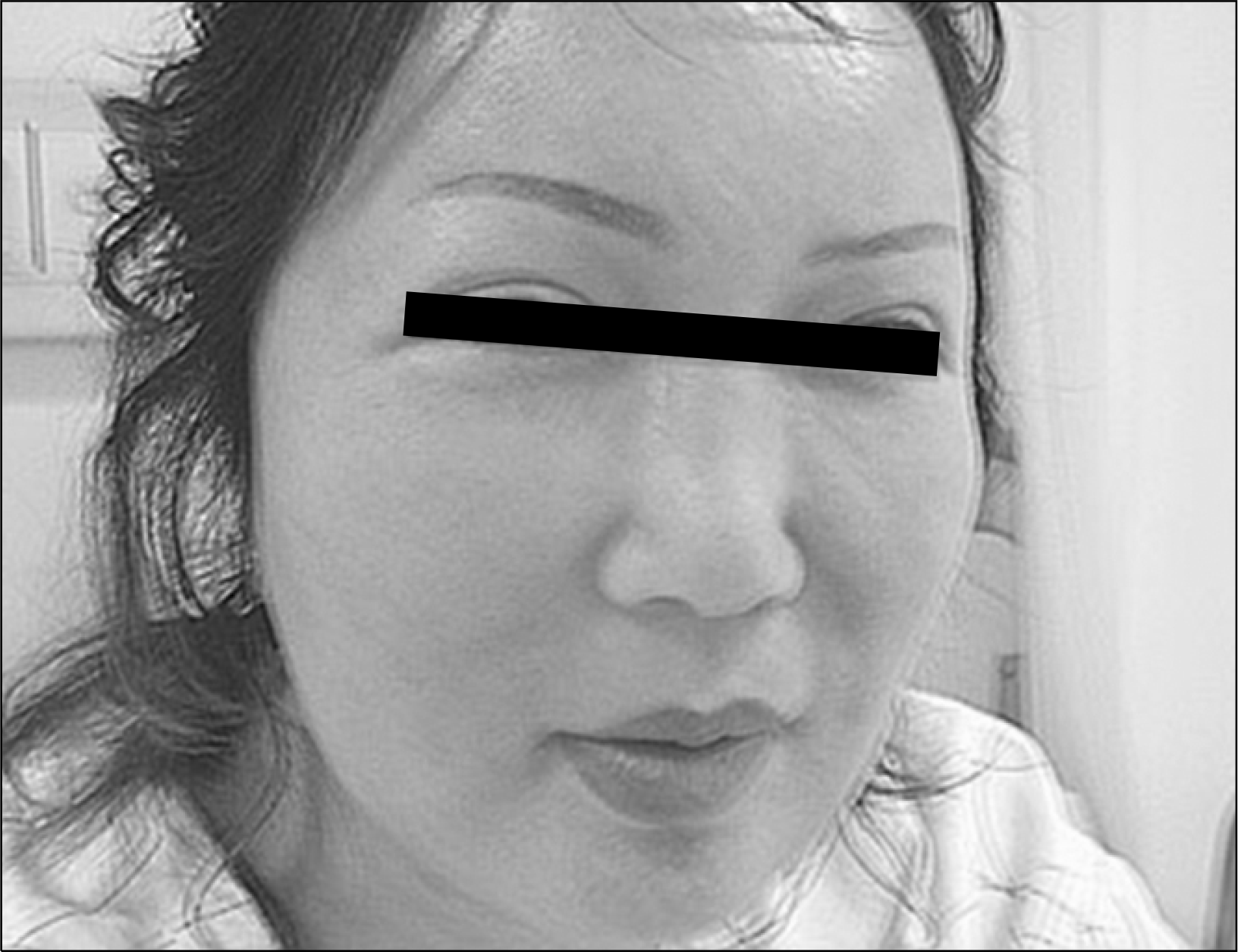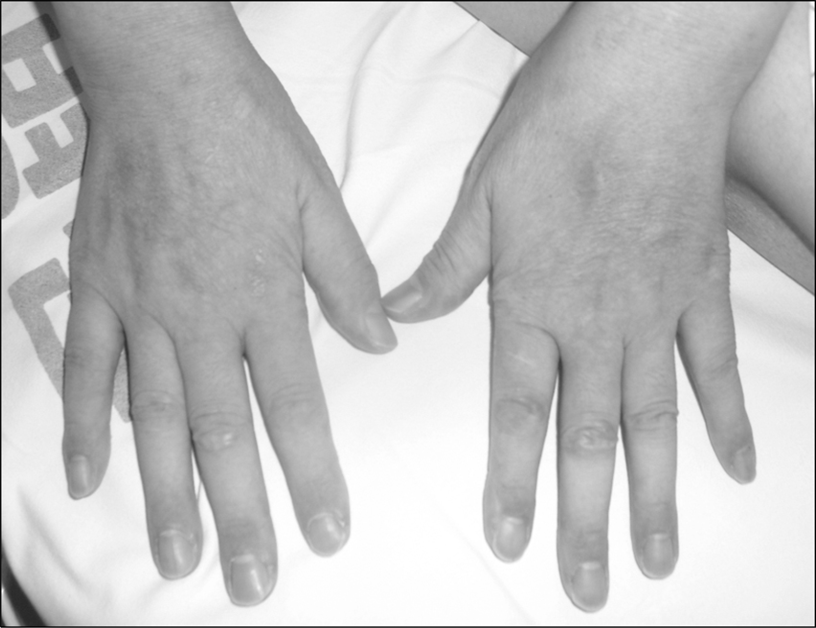Abstract
Dermatomyositis and polymyositis are uncommon, acquired idiopathic inflammatory myopathies of an unknown etiology. Although there are 9 reported cases in the literature of developing dermatomyositis or polymyositis after collagen dermal injection, it is still controversial whether there is a link between injectable filler materials and autoimmune diseases, and specifically dermatomyositis/polymyositis. We experienced a case of a 40-year-old woman who developed dermatomyositis after repeated injections of multiple filler materials, including collagen for cosmetic purposes, which suggests a temporal relation between the two factors. The benefit-to-risk ratio should be assessed for repeated cosmetic surgical procedures that use filler materials.
Go to : 
REFERENCES
1). Sanchez-Guerrero J., Schur PH., Sergent JS., Liang MH. Silicone breast implants and rheumatic disease. Clinical, immunologic, and epidemiologic studies. Arthritis Rheum. 1994. 37:158–68.
3). Clark DP., Hanke CW., Swanson NA. Dermal implants: safety of products injected for soft tissue augmentation. J Am Acad Dermatol. 1989. 21:992–8.

4). Cukier J., Beauchamp RA., Spindler JS., Spindler S., Lorenzo C., Trentham DE. Association between bovine collagen dermal implants and a dermatomyositis or a polymyositis-like syndrome. Ann Intern Med. 1993. 118:920–8.

5). Koeger AC., Lang T., Alcaix D., Milleron B., Rozenberg S., Chaibi P, et al. Silica-associated connective tissue disease. A study of 24 cases. Medicine (Baltimore). 1995. 74:221–37.

6). Oddis CV., Conte CG., Steen VD., Medsger TA Jr. Incidence of polymyositis-dermatomyositis: a 20-year study of hospital diagnosed cases in Allegheny County, PA 1963-1982. J Rheumatol. 1990. 17:1329–34.
7). Goldstein R., Duvic M., Targoff IN., Reichlin M., McMenemy AM., Reveille JD, et al. HLA-D region genes associated with autoantibody responses to histidyl-transfer RNA synthetase (Jo-1) and other translation-related factors in myositis. Arthritis Rheum. 1990. 33:1240–8.

8). Magid SK., Kagen LJ. Serologic evidence for acute toxoplasmosis in polymyositis-dermatomyositis. Increased frequency of specific anti-toxoplasma IgM antibodies. Am J Med. 1983. 75:313–20.
9). Christensen ML., Pachman LM., Schneiderman R., Patel DC., Friedman JM. Prevalence of Coxsackie B virus antibodies in patients with juvenile dermatomyositis. Arthritis Rheum. 1986. 29:1365–70.

11). Singh G., Fries JF. Autoimmune disease and collagen dermal implants. Ann Intern Med. 1994. 120:524–5.

12). Elson ML. The role of skin testing in the use of collagen injectable materials. J Dermatol Surg Oncol. 1989. 15:301–3.

13). McClelland M., Delustro F. Evaluation of antibody class in response to bovine collagen treatment in patients with urinary incontinence. J Urol. 1996. 155:2068–73.

Go to : 




 PDF
PDF ePub
ePub Citation
Citation Print
Print




 XML Download
XML Download